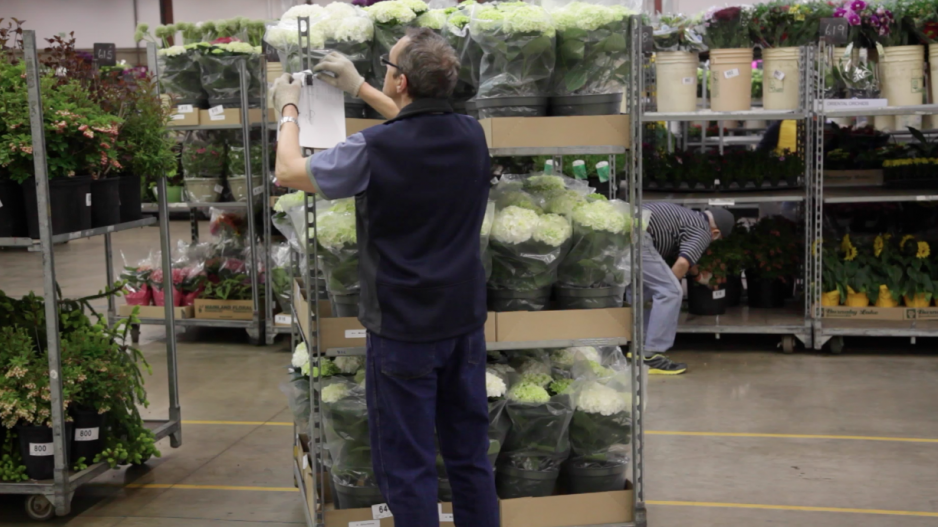It’s 6 a.m. on a rainy Tuesday in early May. Despite the early hour, the parking lot of a nondescript warehouse in south Burnaby is packed with cars and delivery trucks.
What’s sold in the building can’t be seen yet, but as soon as you step inside you can smell it.
“Today our buyers are looking for flowers to sell for Mother’s Day,” explains Bob Pringle, CEO of the United Flower Growers Co-operative Association (UFGCA)farmers’ co-op.
“Growers bring their products in through the night, and we receive [product] up until 5:30 in the morning.”
This is where Fraser Valley and Vancouver Island flower growers come to sell to florists, grocers and garden store owners. The auction takes place from 6 a.m. to 9 a.m. three days a week, and this – the week before Mother’s Day – is the market’s busiest time of the year.
May is the busiest time for flower growers not just because of Mother’s Day, but because it coincides with the prime growing season. Christmas and Valentine’s Day also provide a boost for the flower business.
“About half of our sales go to retailers and about half go to wholesalers,” Pringle says. “The wholesalers are often servicing the bigger stores. The retailers are mostly independent florists, garden centres and grocers – in Vancouver we have lots of greengrocers selling flowers on the street in front of their store.”
Many of those business owners are here today, sitting at desks in an area that looks like a university lecture hall. Buyers bid using laptops in a format known as a Dutch auction.
In front of the auction gallery, auction staff roll carts of colourful flowers past the bidders, indicating with long pointers which flowers are for sale.
Still more buyers are bidding on flowers and bedding plants remotely via the UFGCA’s online system, Pringle said.
Pringle describes a Dutch auction as “an auction in reverse.”
“Prices are set by the growers and decline until someone will pay the highest price. So as soon as someone bids the highest price by what we call stopping the clock, there is a transaction. There’s no further bidding up.”
The format’s advantage is speed.
“One lot sells every two and a half seconds,” Pringle says, “so we can make about 1,000 sales on one of our clocks in an hour – and we have four clocks.”
A clutch of weathered men in their 50s and 60s sit together sipping coffee at the top of the auction hall. Those are the growers, Pringle explains, and they’re watching keenly to see what price the flowers they’ve brought today will fetch.

United Flower Growers staff point to flowers for sale during the auction | Kevin Hill
Growers sell most of their crop to wholesalers months in advance, but they usually grow some extra to cover unforeseen events.
The auction, which functions as a spot market, allows the growers to sell off that extra crop at prices set in the moment.
Fraser Valley flower growers not only supply the Vancouver area, but also ship their crop throughout Western Canada. Some varieties, like orchids, are grown in greenhouses; others (daffodils, tulips, sunflowers and peonies) are grown in fields.
Most of the flowers sold in Metro Vancouver are grown locally, but some varieties are imported. No carnations are grown in Canada; roses, a particularly labour-intensive crop, are often grown in Africa or South America, where labour is cheaper.

The flower warehouse in south Burnaby | Kevin Hill
The flower business may be pretty, but it’s not easy, explains Pringle. It’s tough for local growers to stay profitable unless they get bigger and grow more product.
Meanwhile, many Fraser Valley growers are getting older and finding it difficult to find successors for their businesses. That’s a challenge farmers across British Columbia are facing.
It’s nearly 9 a.m., and the auction hall is emptying out.
Many of the buyers have brought their own trucks here. They’ll load up what they’ve bought and head back into the city, ready for Mother’s Day.




